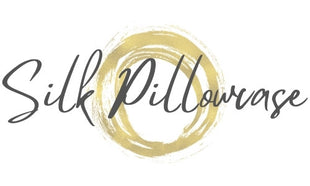Choosing Between a Satin vs Silk
Satin and silk are two excellent choices for your new pillowcase. Both fabrics offer silky surfaces, which are good for skin and hair. For example, silk and satin help:
- Moisturize skin and hair
- Reduce frizz
- Eliminate dry skin-related breakouts
That's not all, though. Satins and silks are less porous than materials like cotton. That makes them poor for absorbing moisture, which is good news because this keeps your pillowcases free of breakout-causing oil buildup.
Here are some more advantages of satin and silk fabrics. Plus, stick around to learn about the cons of these materials. That way, you can make your final decision about which types of pillowcases are best for you.
Satin Pillowcase Pros
Did you know that satin actually refers to a type of weave, and not a particular kind of fabric? It's true — manufacturers can make satin out of anything from cotton to synthetic materials.
These days, it's most common to find manmade satins. Polyester, rayon, and acetate are all fair game for satin-makers.
The great thing about satin is that it's highly affordable. That's because synthetic materials tend to be cheaper to produce compared to natural materials like cotton and linen.
Another plus side to satin's production method is that it's more widely available. You won't have to search hard to find a satin pillowcase. You're also more likely to find a wide range of colors and designs when you go with satin.
Finally, because it's usually made of synthetic materials, satin is a machine-washable fabric. You'll never have to pay extra for dry cleaning or spend more time hand washing your satin pillowcases.
Silk Pillowcase Pros
Silk is one of the oldest fabrics known to man. Historians estimate that the first silks came out of Asia over eight centuries ago.
Originally a fabric for royalty, silk still holds a reputation as a luxury good today.
Like satin, many of the benefits of silk come from the way this material is made. Or, rather, not made because insects produce the fibers that constitute silk.
That's right: the first advantage of silk is that it isn't synthetic. Silk is a natural material akin to cotton and linen. Many different types of insects produce silk but, today, we get most of our silk from the silkworm.
Silk fibers are naturally temperature regulating. That means breathable silk will keep you cool in the summer months and warm in the winter.
What else is so great about the organic fibers of silk? They're resistant to mites, mold, fungi, allergens, and bacteria. That's why silk is considered a hypoallergenic fabric perfect for sensitive skin.
And washing your silk doesn't have to cost you either. Read our guide to washing silk bedding to learn how to save time and money caring for your new pillowcases.
Last but not least, people love silk because it's a luxury. If you want to feel like a queen each time you lay your head down to sleep, silk is the fabric of choice for your pillowcase.
Satin Pillowcase Cons
Even with all its amazing properties, satin does have a few drawbacks.
For one, it can be hard to differentiate between satin and look-alike fabrics like sateen. Sateen is another term for a type of weave, but sateen products are usually made from cotton. And cotton can be rough on your hair and skin.
The other con to choosing satin is that this material is synthetic. If you prefer to keep things au naturel, you may want to go with a non-manmade material like silk.
Silk Cons
So, why wouldn't you want to buy a pillowcase made from ? The only reason we can think of is that some silk manufacturers put hefty price tags on their products.
On average, silk costs between £5 and £15 per yard — and that's not counting the added price for labor and production of your pillowcase!
Yet, considering that the benefits of silk far outweigh those of satin, most people think silk is worth it. But don't think you can scrimp on cost and still get quality silk products.
Some manufacturers mix silk fibres with other, less expensive materials. This can bring down the price, but it can also affect your pillowcase's hypoallergenic properties or even reduce its smoothness.
This is why it's so important to always ensure you're buying your silk products from a reputable source. That's where our beautiful silk bedding comes in.
Where to Find an Affordable Pillowcase of Your Dreams
Deciding between a satin vs silk can be difficult, especially since these fabrics offer many of the same benefits. But when you remember that silk is natural, hypoallergenic, and the ultimate luxury, the choice is easy.
Ready to dress your bed with beautiful silk pillowcases? Choose a pillowcase today and start harnessing the incredible benefits of silk!
